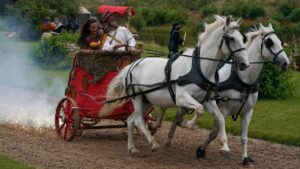Liontown Resources boss Tony Ottaviano on selling into the world’s hottest commodity market, lithium

Pic: Liontown/Stockhead
It’s the word on every investor’s lips right now: Lithium.
Prices are skyrocketing in response to an earlier than expected supply shortage, which has sent analysts scrambling to update their forecasts.
Investment bank JP Morgan recently revised its 2022 forecast for spodumene upwards by 71% from US$1575/t to US$2688/t, and its hydroxide price forecast by 34% from US$24,500/t to US$32,750/t.
Spodumene was fetching around US$400/t just 18 months ago.
In October, Pilbara Minerals (ASX:PLS) sold a spot cargo on its online Battery Material Exchange auction platform for an equivalent of US$2629/dmt, the most expensive ever.
Analysts are becoming less confident those price pressures will ease in 2022.
Despite an expected 28% increase in mined supply to 554,000t lithium carbonate equivalent this year, JP Morgan thinks the rise in global demand will soar even further by 37% to 670,000t LCE.
Furthermore, that deficit is forecast to rise to 982,000t by 2030 – more than double the current mined supply – as demand grows at a compound annual growth rate of 24%.
The big question plaguing the industry is where the supply to make up this shortfall is going to come from, and it’s why almost every Tom, Dick and Harry with a lithium stock is flying high right now.
High flyer
One of the highest flyers, Liontown Resources (ASX:LTR), has lithium in abundance. Its Kathleen Valley deposit, located around 400km north of Kalgoorlie in Western Australia, contains a reserve of 68.5Mt at 1.34% lithium oxide.
The onetime penny stock worth just $14 million is now a $3.5 billion ASX 200 company, having grown more than 8000% since buying the greenfields Kathleen Valley from gold miner Ramelius Resources for $500,000 in shares in August 2016.
Liontown’s $473 million mine will produce an initial 511,000tpa of 6% spodumene concentrate starting in 2024, ramping up to 658,000tpa after a couple of years, with a pre-feasibility study also in the works on adding a refinery to make it one of the world’s largest integrated lithium operations.
While the fledgling lithium miners of five years ago were price takers cemented to the bottom of the food chain, the new breed like Liontown are entering the industry from a relative position of strength.
With a $490 million equity raise already under its belt to largely finance the initial development, Liontown’s aiming to take the upper hand in debt and offtake negotiations.
Car giants under pressure to replace internal combustion engine production lines with lithium-ion battery EVs are heading straight to the source to secure supply in a bare market.
Liontown just secured its first big fish. Korean giant LG Energy Solutions will take 100,000tpa from Kathleen Valley in its first year of a five year deal starting in 2024, then 150,000tpa thereafter linked to market lithium hydroxide prices, with an option for another five years after that.
More offtake agreements will be inked ahead of a final investment decision due by in the second quarter of 2022.
Stockhead caught up with Liontown managing director Tony Ottaviano to discuss the offtake deal and the future of the lithium industry.
I imagine the offtake deal was a lot of work, especially given you couldn’t go to Korea to discuss it.
“I was thinking about this yesterday, have I ever signed a contract of this size and negotiated it and not had one face to face engagement with the customer?
“And the answer is no. And the customer has actually never been to site. It’s remarkable when you think about it.”
That is pretty remarkable, but I guess it speaks volumes for the significance of securing lithium supply for companies like LG.
“When we did the capital raise back in December, when I presented to the analyst community and investors, they asked me why now for the capital raise?
“Why won’t you lock away your offtakes first, get your debt away and then finally your equity raise? And there was a specific strategic rationale here, we wanted to put ourselves in a position of negotiation strength.
“Because when you’re dealing with the customers, they know that unless you get an agreement with them, you can’t get the funding from the banks.
“And when you go to the banks, the banks say ‘well, you need to put a floor price in the contract.’
“And when you go back to the customer and say you need a floor price, where the customer says, ‘well, we need a ceiling’.
“So the raw material provider becomes the one that has to compromise and drop value. So by having the equity raise and a substantial equity raise in the bank, the posture in that negotiation has changed profoundly, not only with banks, not only with customers, but with contractors, because now we are not beholden to that dynamic.
“That would extend to the fact that here we are, we’ve got a contract now where we’ve got full upside, there’s no ceiling, and we protect the downside by having suspension rights, that in the event the price of lithium goes below the cost of production we can suspend without penalty.”
Liontown Resources share price today:
This is obviously very different from the way of funding a lithium mine or securing offtake for a lithium mine four or five years ago, when the industry was first really ramping up. What does that say about the way the power balance has shifted in favour of the producer?
“There’s a couple of ways of responding to that. It is clear that five years down, the banks have become far more comfortable and mature in their thinking of the sector.
“Secondly, the push away from fossil fuel means that the banks have a lot of money they need to place in other commodities.
“The third one is there’s much more transparency now in the way the product is priced. It’s still not ideal and it’s still not the same as nickel, gold or iron ore, but it’s a lot better than it was five years ago.
“All those three things in play, and then ultimately you have a very strong as the banks call it, thematic. The market and the move to EVs and mobility and decarbonisation is so strong now that the credit committees in the banks are far more comfortable backing it.
“And we saw that with some very competitive rates that we’re getting from the banks.”
This is about 30% of your initial production. You have more negotiations underway, how much are you looking to place with offtakers and how much do you want to leave yourself exposed to the spot market?
“Okay, it’s a good question. Our strategy is to lock away about 85% of our production under contract and leave about 15% to stimulate the spot market.
“It’s important for the long term health of this industry that we have a transparent and reliable price reference for spodumene. At the moment, the work that Pilbara is doing, I like that strategy, I like the intent.
“So I want to make sure that I can also put volume into that market. Now, that’ll depend on my production profile, but in the main 15% spot, 85% under contract.”
So there’s upside there on spot for that sort of auction model that Pilbara Minerals have pioneered?
“Correct. Now, whether it is the BMX platform, or some other platform… again, I worked in the iron ore industry so I’m very familiar with how to set up these indices.
“And it could be the BMX platform, I just need to do a bit more work to understand it better.”
What are the offtakers saying to you about their efforts to secure supply? Are they telling you how desperate they are to lock down supply, knowing that a deficit’s coming in?
“So let me start by saying this: we’ve been very clear in our strategy to the market that I want to diversify my offtake, both on geography and position in the value chain.
“And position in the value chain is critical. Because I want to be as close as possible to where the technology is being adopted, and where the technology is being formulated.
“And that’s important, because if I decide to go down refining, I want to make sure that I’ve got early information and data as the technology pivots, so that I can be agile and change my strategy.
“If I simply sell to a converter, then I’m blinded by what happens beyond the converter. So we start it at the OEM and work upstream.
“The second thing is … the OEMs and battery manufacturers used to say, ‘look, we’re not interested in mining, mining’s got all this risk, we’ll just create the demand signal and the rest will happen’.
“Now, they’ve realised that having a say in the raw material gives them a strategic benefit. Because you think about it, if an OEM owns the raw material or a battery producer owns the material, they can pick and choose which converter they send it to.
“They can send it to a converter in Europe, they can send it to a converter in North America, I can send it to a converter in Asia if they want to.
“It gives them strategic optionality and that took a bit of time to get them on that journey.”
So you’ve got LG in Korea. Do you have any EV makers themselves that are trying to get in for offtake? Have you been speaking to Tesla, BYD, Volkswagen, those sorts of players?
“I can’t be specific, but I am talking to all the OEMs. I think they understand that supply is going to be harder than people think to bring on.
“And we’ve already seen the issues in countries outside of Australia. Look what happened at Rio, the board approved US$2.4 billion without approvals and now the government has annulled all the arrangements.
“And that’s the one of the biggest, the second biggest mining company in the world.
“And then you’ve got all the issues coming out of Chile, where the new president wants to rewrite the Constitution and nationalise the lithium industry. In Argentina, well, it’s difficult doing business in Argentina, having personally run businesses there myself.
“And then you’ve got Africa. While there’s some fantastic resources in Africa, it’s Africa. And when I see deposits, which are very, very good, but in the central Congo, and telling the market they’re going to be out producing in 2023, good luck.
“I think that customers like LG, who are sophisticated, understand that and realise the importance of having an offtake in Australia.”
What do you think of the prospects of getting that next stage beyond the initial mine, the refinery, in place and do you have a good sense of where you’re going to be looking to build that?
“It’s a good question, Josh. We want to do this right.
“The next step we want to make sure is very considered. So we’ve ticked the downstream into PFS.
“And the first thing we’ll do is a fairly detailed testing program and piloting.
“We were watching with interest, the three refineries being built in Perth – Kemerton with Albemarle and MRL, Tianqi in Kwinana and Wesfarmers-SQM in Kwinana. Tianqi is still trying to commission this thing.
“So as I said to you, the way the offtake is structured, we’re capturing converter margin now through this pricing mechanism.
“So I want to make sure (an investment in a refinery) a) technically it’s sound and b) financially it’s sound.
“So being second mover here gives me the opportunity to assess whether the market is changing, whether the technology is changing (and whether) that requires a different material.
“At the moment, LFP batteries seem to be dominating and as a result, lithium carbonate is skyrocketing in price.
“So I don’t know how the people that are building hydroxide facilities (will go).
“Things may change so I want to make this a considered decision and that’s why we’re doing the test work and watching this space very closely.
“The scoping study had it located in Kathleen Valley for various strategic reasons. But we will open that up as part of the PFS.
“Kalgoorlie looks promising. Lynas is building a facility there and there’s a lot of advantages there.
“It’s got a residential workforce and the government would be pretty happy with it there, so that’s one option. If LG … they’re very interested in participating in something, so we’ll look at overseas possibly in a geopolitically favourable area.”
Just on the lithium market itself, obviously we’ve seen the price, particularly for spodumene and like you said before, carbonate is really skyrocketing and we’re talking about 300% increases across the three major price points or price indexes. Is that going to continue?
“Well, I just saw a report today by JP Morgan, have you seen that?
“They’re predicting a huge increase in spodumene price this year and next year.
“Bank of America came out last week and said they won’t be surprised if the spodumene price doesn’t get north of US$3000/t this year, US$3000-3600. And they reckon the next Pilbara auction will reinforce that.
“So I see the market extremely strong ’til the end of the decade and maybe beyond. If you look at the JP Morgan report, their supply demand curve shows a deficit of lithium going close to a million tonnes on an LCE basis by 2030.
“They’re saying we’re in deficit now, right to the end of the decade.”
So that deficit’s about double the current market? Wow.
“So how does this equate in them predicting massive increases in spodumene price, but yet they leave their long term price at US$800/t?
“I don’t know how that equation solves without the long term price increasing. And as I keep going back, supply will be harder to bring on than people think.
“Now, what that could result in is potential substitution. But I don’t think that’s an issue with lithium. I see that more of an issue in nickel and cobalt.”
Do you think you might need prices like that to incentivise sort of lower margin production as well?
“Yeah, so you’ll get a lot of currently uneconomic lithium being brought to market.
“These clay deposits in North America, where the technology is pretty (new) but then again, you’ve got environmental approvals that are very, very tough over there.
“So it’s going to be an interesting 2-3 years.”
Related Topics

UNLOCK INSIGHTS
Discover the untold stories of emerging ASX stocks.
Daily news and expert analysis, it's free to subscribe.
By proceeding, you confirm you understand that we handle personal information in accordance with our Privacy Policy.








